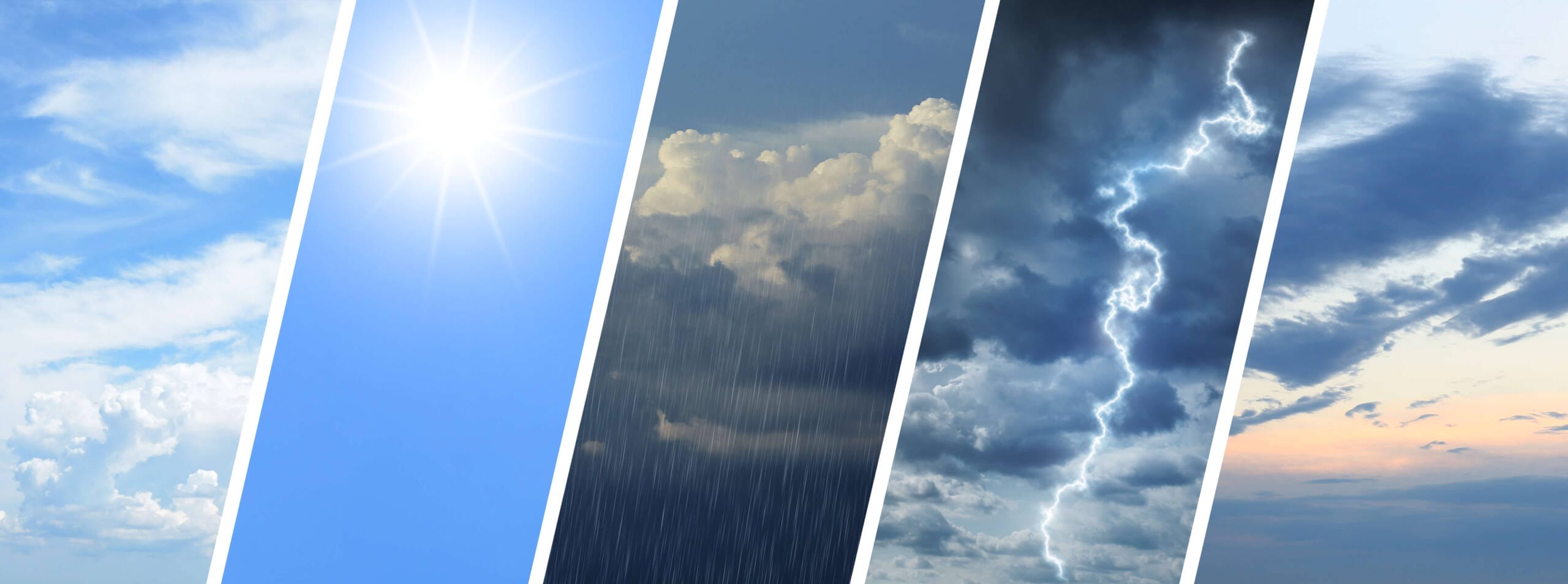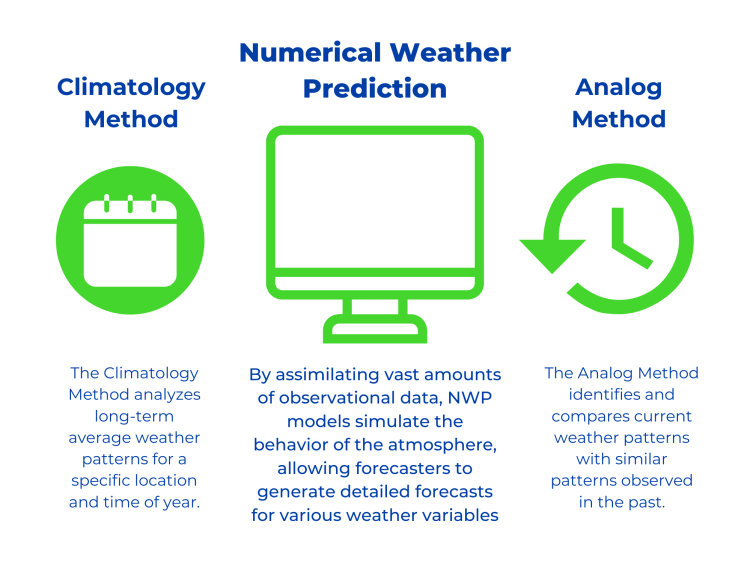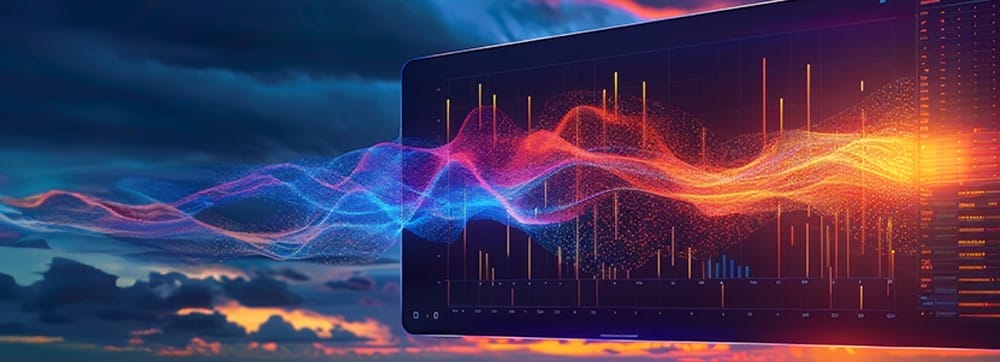
The Ultimate Guide to Weather Forecast Models 2025
The Ultimate Guide to Weather Forecast Models in 2025
Accurate weather forecasting plays a crucial role in virtually every industry and community, as it helps businesses make informed decisions, enables emergency response teams to prepare for natural disasters, and assists individuals in planning their activities. Conversely, inaccurate forecasting can lead to significant consequences such as economic losses, safety hazards, and disruptions in daily life. The foundation of accurate weather forecasting lies in weather forecast models, which are sophisticated computer algorithms that simulate and predict atmospheric conditions. In this guide, we will explore the different types of weather forecast models, understand why forecasts can vary, and discover the most accurate forecast models available today.

Main Takeaways
- Weather forecast models are essential for accurate weather forecasting and have a significant impact on businesses, communities, and individuals.
- There are various types of weather forecast models, including global models that cover the entire globe, mesoscale models that focus on specific regions and microscale models that focus even further onto specific cities or even neighborhoods.
- Different weather forecast models produce varying forecasts due to their distinct algorithms, resolution, and initial conditions.
- The accuracy of weather forecast models depends on factors such as the region, timeframe, and type of weather phenomenon being predicted, in addition to the quantity and quality of the initial weather data inputs.
- The European Center for Medium-Range Weather Forecasts (ECMWF) and the USA’s Global Forecast System (GFS) are two widely recognized weather forecast models.
- Weather forecasting innovation and technology have advanced in several ways.
- Climavision, a leading provider of weather forecasts, utilizes advanced data assimilation techniques, accurate numerical weather prediction (NWP) and cutting edge AI technology to deliver precision forecasts.
What Are Weather Forecast Models?
Weather forecast models are sophisticated computer algorithms that use mathematical equations to simulate and predict atmospheric conditions. These weather models incorporate data from weather observations, satellite imagery, radar measurements, and other sources to create numerical representations of the Earth’s atmosphere. By simulating the behavior of the atmosphere, these weather forecast models can generate forecasts for different locations and timeframes.
Types of Weather Models
Weather forecast models can be categorized into three main types: global models, mesoscale models, and microscale models.

Global Models
Global weather forecast models cover the entire globe and provide forecasts on a large-scale basis. These models use a grid system to divide the Earth’s surface into numerous points for analysis and prediction. Two well-known global weather models are the Global Forecast System (GFS) and the European Center for Medium-Range Weather Forecasts (ECMWF) model.
GFS
The Global Forecast System (GFS) is a global numerical weather prediction model developed by the National Weather Service (NWS) in the United States. It utilizes a complex system of mathematical equations to simulate atmospheric conditions worldwide. The GFS model provides forecasts for a wide range of weather phenomena, including temperature, precipitation, wind, and atmospheric pressure.
ECMWF
The European Center for Medium-Range Weather Forecasts (ECMWF) model is another global numerical weather prediction model that is highly regarded for its accuracy. It employs advanced data assimilation techniques and sophisticated numerical algorithms to simulate atmospheric processes. The ECMWF model provides high-resolution forecasts for various meteorological variables, enabling forecasters to make more precise predictions.
Mesoscale Models
Mesoscale numerical weather prediction models focus on specific regions such as entire nations and provide forecasts at a higher resolution compared to global models. These models are particularly useful for predicting localized weather phenomena and severe weather events.
NAM
The North American Mesoscale Forecast System (NAM) is a mesoscale weather forecast model developed by the National Centers for Environmental Prediction (NCEP) in the United States. It offers high-resolution forecasts for North America, including detailed predictions of temperature, wind, precipitation, and atmospheric instability. The NAM model plays a vital role in predicting severe thunderstorms, winter storms, and other mesoscale weather features.
HRRR
The High-Resolution Rapid Refresh (HRRR) model is another mesoscale model widely used in weather forecasting. It provides short-term forecasts with very high temporal and spatial resolution, making it valuable for predicting rapidly evolving weather phenomena, such as thunderstorms, convective systems, and fog. The HRRR model leverages advanced assimilation techniques and radar data to enhance its forecast accuracy.
Microscale Models
Unlike larger-scale weather forecast models that cover larger regions like countries or continents, microscale models zoom in on small areas, such as cities or neighborhoods. Microscale models take into account the unique characteristics of the local terrain, land use, and urban features that can significantly influence the weather patterns within a small area. These models utilize high-resolution data and complex algorithms to simulate atmospheric processes at a fine scale, capturing details such as local wind patterns, temperature variations, and the effects of urban heat islands.
Why Forecasts Vary Depending on the Weather Model
Different weather forecast models can produce varying forecasts due to several factors:
- Resolution: Models with higher resolution can capture small-scale weather features more accurately.
- Algorithms: Each weather forecast model employs different mathematical equations and algorithms, which can lead to variations in forecast outcomes.
- Initial Conditions: The accuracy of weather forecasts relies heavily on the quality and quantity of initial observational data used to initialize the model simulations.
- Data Assimilation: Weather forecast models assimilate various observational data sources, and differences in data assimilation methods can affect forecast outcomes.
To achieve a “perfect” weather forecast that exactly reproduces the actual weather, modelers would need every current condition for every point on the face of the earth. In addition, they would need a model whose construction could take all of these readings and produce the exact weather forecast for each of those points. Since modelers work from an incomplete initial dataset (presently, it’s impossible to measure every location on the earth simultaneously), they have developed a variety of techniques to APPROXIMATE the forecast. These techniques yield very good results, but they are not perfect. These factors contribute to divergent predictions among weather forecast models, highlighting the need for forecasters to consider ensemble forecasting and analyze multiple model outputs to gain a comprehensive understanding of the possible weather scenarios.
What Is the Most Accurate Weather Forecast Model?
The accuracy of weather forecast models depends on several factors, including the region, timeframe, and type of weather phenomenon being predicted. Generally, global weather prediction models like the ECMWF and GFS are considered fairly accurate in predicting large-scale weather patterns and features. However, weather forecast accuracy can diminish over time as the forecast horizon extends.
To provide the most accurate weather forecasts, Climavision, a leading provider of weather insights, leverages advanced climate technology and state-of-the-art numerical weather prediction (NWP) modeling. While NWP is widely recognized as the most accurate method for weather forecasting, Climavision also provides AI model forecasting to expand the forecasting time horizon out to 2 years.
Climavision’s cutting-edge technology, including advanced AI Algorithms, enables the rapid production of highly accurate forecasts, empowering businesses, communities, and individuals to make informed decisions and stay ahead of weather-related challenges.
Three Main Types of Weather Forecasting
Weather forecasting employs various methods to predict future atmospheric conditions. Below are the three main types of weather forecasting.

Climatology Method
The climatology method relies on historical weather data to forecast future weather conditions. It analyzes long-term average weather patterns for a specific location and time of year. However, this method lacks the ability to account for short-term weather fluctuations and is less effective for predicting unusual or extreme weather events.
Analog Method
The analog method identifies and compares current weather patterns with similar patterns observed in the past. By finding analogs, forecasters can predict future weather conditions based on the outcomes of those previous events. This method requires extensive historical weather data and relies on subjective judgment in selecting relevant analogs.
Numerical Weather Prediction modeling
Numerical Weather Prediction (NWP) modeling is the most widely used and accurate method for weather forecasting. NWP involves solving a set of mathematical equations that represent the fundamental laws of physics governing the atmosphere. By assimilating vast amounts of observational data, NWP models simulate the behavior of the atmosphere, allowing forecasters to generate detailed forecasts for various weather variables.
Climavision relies on advanced NWP model techniques to deliver highly accurate and reliable weather forecasts. Our state-of-the-art technology, including Dalton AI, rapidly processes vast amounts of data and produces forecasts with exceptional precision, empowering businesses, communities, and individuals to make informed decisions and protect their interests.
Advancements in Weather Forecasting models
Weather forecasting has seen several recent advancements, driven by advancements in technology, data availability, and computational capabilities.

-
Improved Data Assimilation
Data assimilation techniques have improved, allowing weather forecast models to better integrate observational data from various sources, such as satellites, radar systems, weather stations, and buoys. These advancements enhance the accuracy of initial conditions for model simulations, leading to more precise forecasts. For Climavision, our tech platform shines in this area. Our unique data processing approach and quality control allows for 20+% usable observational data as opposed to the roughly 3% usable data that is currently being processed across the industry.
-
Higher Resolution weather forecast Models
Weather forecast models, Global, Meso, and Micro, now operate at higher resolutions, enabling more detailed predictions of atmospheric conditions. Higher resolution models capture small-scale weather phenomena more accurately, such as convective storms, localized rainfall patterns, and wind gusts. At Climavision we deliver our high-resolution forecasting data for our Horizon AI Weather models both through APIs, called DOCK, and a web-based interactive model viewer, called DASH.
-
Ensemble Weather Forecasting models
Ensemble forecasting involves running multiple model simulations with slightly varied initial conditions to account for uncertainties in weather predictions. This approach provides a range of possible outcomes, helping forecasters understand the level of uncertainty associated with a particular weather event. Two examples of ensemble forecasting are Climavision’s Horizon AI Point and Horizon AI Subseasonal to Seasonal.
-
Improved Predictions of Extreme Weather Events
Advances in weather forecasting have led to improved predictions of extreme weather events such as hurricanes, tornadoes, severe thunderstorms, and heavy precipitation events. Enhanced models, better understanding of atmospheric dynamics, and improved data assimilation techniques contribute to more accurate and timely forecasts of these potentially dangerous weather phenomena. The Horizon AI Forecasting Suite grows from a revolutionary approach that Climavision has created. From more data to better processing and quality control to a proprietary NWP powered by our groundbreaking tech platform and advanced AI algorithms, we are leveling up every aspect of weather forecasting to provide our customers with the fastest, most accurate forecasting.
-
Machine Learning and Artificial Intelligence (AI)
Machine learning and AI techniques are being increasingly integrated into weather forecasting. These technologies enable the extraction of patterns and relationships from vast amounts of weather data, leading to improved forecast accuracy and the identification of subtle atmospheric signals that may influence future weather conditions. Climavision uses cutting edge AI technology to its fullest extent to create AI models like our Horizon AI Subseasonal to Seasonal model as well as bolstering the speed and accuracy of our NWP models Horizon AI Global, Point and HIRES. With AI and NWP expertise combined, Climavision can offer the entire timescale horizon of forecasting from real time radar coverage to long term forecasts as much as two years out. From data assimilation and quality control to generating hundreds of ensemble forecasts, we have incorporated AI into every step of the forecasting process so that we can deliver forecasts tailored to specific use cases with greater speed and verified accuracy.
-
Enhanced Numerical Weather Prediction (NWP) Models
Numerical Weather Prediction models have seen continuous advancements, incorporating more sophisticated physical parameterizations, improved boundary conditions, and increased computational power. These improvements allow for more realistic simulations of atmospheric processes and better prediction of weather patterns. The economic impact of climate-related disasters has escalated significantly in recent years. In 2023, the United States experienced a record 28 weather and climate disasters, each causing losses exceeding $1 billion, totaling approximately $92.9 billion in damages. This marked the highest number of such events in a single year since records began in 1980. These extreme changes make relying on previous weather patterns unreliable. At Climavision, we keep pace with more volatile weather conditions with our advanced Numerical Weather Prediction Modeling that outpaces all others in accuracy.
-
Improved Visualization and Communication of Weather Information
Weather forecast information is now presented in more user-friendly and visually appealing formats. Advanced data visualization techniques and user-friendly interfaces make weather forecasts more accessible and understandable to the general public, facilitating informed decision-making. How ever our clients need the data, we can deliver it customized to their needs. The DOCK functions as a secure connection point for Climavision’s vast data lake. Allowing for deeper, more customized integrations to support business critical operations and time-sensitive workloads. DASH is a web-based interactive model viewer that allows users to access the latest Climavision data. Fully hosted and secured with Climavision’s cloud, there is no additional integration needed to get up and running with this intuitive modelling dashboard.
-
Integration of Big Data and Real-Time Observations
The integration of big data analytics and real-time observations has enhanced weather forecasting capabilities. Access to vast amounts of data, including real-time observations from weather sensors and citizen weather stations, allows forecast models to capture local weather conditions more accurately and update forecasts in real-time.
More observational data is crucial for forecasting accuracy. Our atmosphere has, and continues to, change over time, causing more erratic and severe weather. Forecast accuracy is more important than ever to see these volatile incidents coming, and to prepare as much as possible. Unique observational datasets are a major advantage of Climavision’s Horizon AI forecasting and Radar as a Service. With our supplemental radar network and access to space-based observations with other unique high resolution observational data, we deliver global coverage of unbiased data with the highest resolution and geographical granularity. We fill the low-level coverage voids in the NEXRAD network and observational gaps in the upper troposphere and low earth orbit to deliver the most accurate forecasts and real-time radar data.
These advancements collectively contribute to the continuous improvement of weather forecasting, enabling better preparedness, risk mitigation, and decision-making in various sectors and communities.
Protect Your People and Property With More Accurate Weather Forecasts
Accurate weather forecasts are vital for numerous industries and communities to safeguard lives, protect property, and ensure business continuity. Industries such as agriculture, transportation and logistics, energy utilities, commodity trading, and emergency management heavily rely on precise weather information to make informed decisions and mitigate risks.
To leverage superior climate technology and access accurate, real-time forecast data, request a demo from Climavision. Our advanced weather insights and cutting-edge technology can empower your business or community to proactively prepare for weather-related challenges, enhance safety measures, and optimize operations.

Weather Models FAQs
What Are the Different Weather Forecast Models?
Weather forecast models can be broadly categorized into global models and regional models. Global models cover the entire Earth, while regional models focus on specific parts of the Earth. These models utilize a grid system where forecast points are laid out over the area they cover.
What Are the Two Most Well-known Weather Models?
The two most well-known weather models are the European Center for Medium-Range Weather Forecast (ECMWF) model and the National Weather Service’s Global Forecast System (GFS) model. They are commonly referred to as the European and American models, respectively.
What Is the most accurate Weather Forecasting Model?
The accuracy of weather forecast models depends on various factors such as region, timeframe, and type of weather phenomenon being predicted. Global models like the ECMWF and GFS are generally considered fairly accurate, with the ECMWF model being slightly more accurate than the GFS. Newer global weather forecast models like the Horizon AI Forecasting Suite, are improving the accuracy of weather forecasting by utilizing the latest technological advancements. In fact the Horizon AI Subseasonal to Seasonal is 30% more accurate globally and 100% more accurate for specific locations versus the ECMWF. However, it is also important to consider ensemble forecasting and multiple model outputs for comprehensive weather predictions.
Climavision’s advanced climate technology, backed by a combination of innovative technology and proprietary NWP, offers exceptional forecast accuracy, enabling businesses, communities, and individuals to access reliable and timely weather information. If you’d like to learn more about forecasting and how accurate weather data could benefit you or your community, contact us.


